Have you ever wondered what is perlite?
What is perlite made of?
And how is perlite beneficial to the soil?
If yes, bring your seat closer as we'll be revealing to you everything you need to know about horticultural perlite and how best to use perlite in your garden.
Now, if you've ever used a bag of potting soil and you noticed some little white, Styrofoam-like balls in the mixture, then you're already familiar with it.
Those small balls are a type of mineral product known as "perlite," and all the ingredients in those mixtures offer tremendous benefits to plants – including perlite.
Perlite is simply vital if you want to become good at hydroponics or gardening. Veteran gardeners love this mineral – and often use it in their garden.
And if you don't know how and where to find a good perlite product on the market, we'll also help you by showing you the best perlites to use.
That said, let's let started.
Table of Contents
What is Perlite?
Perlite is a form of shapeless volcanic glass that is heated up to 1,600°F, at which point it pops just like popcorn and swells up to 13x its former size, leading to a very lightweight material.
It's sometimes referred to as "swollen pyrite" and is nicknamed "volcanic popcorn." If you use a microscope to look at a piece of gardening perlite, you would see that it's relatively porous.
Additionally, the cavities in horticultural perlite help to store nutrients and some moisture that plants might need but drain excess water away. It's clean, disease-free, non-toxic, lightweight, and insanely easy to work with.
Perlite is often used in the garden and industrial settings. It's generally mixed into ceiling tiles, lightweight plasters, or masonry as an insulator.
Let's discuss the uses of perlite further below:
Read Also: Best Garden Mulch of All Time
What are the Uses of Perlite
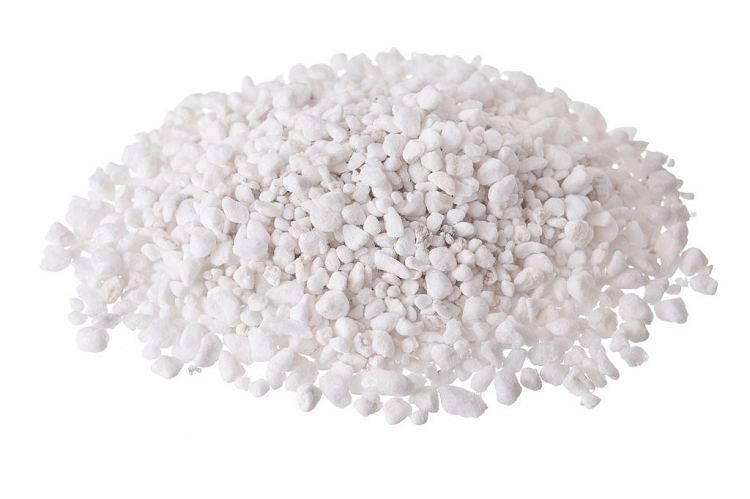
Perlite has many applications, as a gardener, it's an essential element in your garden.
Perlite is used in soil mixtures to improve ventilation and alter the soil substructure to keep it loose, resist compaction, and well-drained.
A one-part mixture of peat moss, loam, and perlite is ideal for container growing, allowing the pot to retain enough oxygen and water. Perlite is equally fantastic for rooting cuttings and promotes much stronger root formation than the ones grown in only water.
Perlite is also used on cement and gypsum plasters, masonry construction, as well as loose-fill insulation.
Aside from that, it's also used in municipal swimming pool water filtration, pharmaceuticals, and an abrasive in polishes, soaps, and cleansers.
How is Perlite Made?
Perlite glass is rich in water, and as a result, it pops just like popcorn when heated to high temperatures.
Therefore, the processed perlite balls are made by grinding natural perlite glass and baking them in industrial ovens.
Crushed perlite must be quickly heated to 900°C (about 1650°F) in order to finish the transformation process. Heat softens the mineral structure, enabling the water trapped inside to expand into steam while trying to escape.
The process results in the expansion of the crushed pieces of perlite. The mineral pieces usually expand between 7–16 times their actual size and volume to create those lightweight Styrofoam-like balls.
Additionally, the foamy balls have a ton of porous openings inside of them and are generally stable, sterile, and clean. It can easily maintain its shape in the soil without disintegrating.
What is Perlite made of?
Perlite is incredibly heavy and dense in its natural form, just like every other volcanic rock. Perlite is typically made of the following ingredients:
- Aluminum oxide
- 70-75% of silicon dioxide
- Sodium oxide
- 3-5% Water
- Iron oxide
- Magnesium oxide
- Potassium oxide
- Calcium oxide
Since perlite is an inherently occurring mined mineral, it's a nonrenewable resource. The United States, Japan, Greece, and Turkey are the primary producers of perlite.
Furthermore, it's a somewhat affordable mineral. It is usually used for industrial purposes such as construction as well as in the manufacturing of ceiling tiles, plasters, and masonry, as we mentioned earlier.
But we're mostly interested in the use of perlite in hydroponics and gardening.
And because of that, the hard mineral glass must be processed into the lightweight, white-colored, plasticky object that looks like Styrofoam, confusing lots of veteran gardeners about its primary purpose and origin!
That said, let's now look at the various advantages of perlite in your garden:
Benefits of Perlite in a Garden
Perlite is such a valuable additive to gardens and hydroponic setups, and there are good reasons for that. They primarily stem from its unique chemical and physical properties, which include:
- Perlite has a neutral pH level
- It is physically stable and holds its shape even when hard-pressed into the soil
- It doesn't have any toxic chemicals and is created from naturally occurring compositions found in soil
- It can also hold a certain amount of water while letting the rest drain away
- Perlite is insanely porous and has pockets of space inside for air
These properties enable perlite to simplify two vital processes in hydroponics/soil, which are critical for the growth of plant. These critical processes are:
1. Draining
Every living thing needs water to survive. However, when it comes to plants, too much water in the soil can result in drowning.
As a result of this, the root system is without oxygen, eventually leading to death. So good drainage is essential to let empty air spaces remain in the soil.
And adding perlite to the soil helps to improve its drainage capabilities to a great extent, as it has terrific water draining and filtering abilities. With all those pores, most of the excess water will drain off.
Furthermore, those air pockets equally mean that perlite is excellent for root systems, too. The air pockets get lost once the soil gets packed down. However, perlite is a harder mineral, and as a result, it holds its shape, retaining those air pockets for the roots.
2. Aeration
Every plant cell needs oxygen to stay alive, even the ones that are underground – and the green parts up top has the capability of producing it during the process of photosynthesis.
But down below, the root system must soak it up from the soil. Therefore, aerating the soil enables little pockets of air to remain. This mainly aids with the growth of healthy root systems.
Different Types of Perlite
Perlite created for the aim of gardening and horticulture are often categorized into three places, depending on the individual particle's size:
Coarse Perlite: Coarse perlite typically has the highest draining and porosity abilities. It is mainly ideal for orchids and succulent plants. It is equally not affected so much by winds but finds it difficult to move up to the topsoil.
Medium Grade Perlite: This bestrides the middle ground in terms of draining and aeration. It is best for seedlings and potted seeds.
Fine Perlite: This type is the lightest grade of perlites – and is ideal for starting seeds and root cuttings. Besides, fine pieces of perlite can equally be lightly scattered on top of the soil in your lawns and gardens.
How to Use Perlite in the Garden
Perlite has many uses in the garden:
On the surface: You can scatter perlite on the surface of the soil, as it acts as a wicking agent. This way, it'll gradually work its way down into the soil, enhancing drainage.
In Soil Mixes: You can use a combination of loam, peat moss, and perlite in equal measures to make your own homemade soil mixes. In pots, it helps to keep everything loose, well-draining, and aerated.
For root cuttings: Perlite also helps to stimulate root growth better than just plain water. Your starting seeds or cuttings can be placed in an air-filled Ziploc bag contained moistened particles of perlite for weeks.
How To Use Perlite In Hydroponics
Aside from your gardens, you can also use perlite in hydroponics and soil-less horticulture via the following means:
Independent Growing Media: In some instances, perlite is suitable as a hydroponic means. But it is not a decent option for high water settings, such as the ebb and flow systems, or deep water culture.
Propagation of plant cuttings: It encourages root growth, and also prevents drowning by draining away excess water from the cuttings. Perlite can be used with rooting compounds.
In combination with other growing media. Perlite is mostly mixed with vermiculite in equal amounts. This helps to solve the water-retaining problem of Perlite while also boosting the water-retention capacity of vermiculite so it can be used in water-rich systems.
What Type of Perlite to Use
Among coarse perlite and medium or fine-grade, which is the best to use?
Here's the point: When it comes to air porosity, coarse perlite has the highest, and thus it offers the most drainage capability and helps to make sure that your plant's roots can breathe properly.
It's also popular among farmers who grow succulents or orchids, and those who do lots of pot/container gardening, as it offers impressive drainage. However, unlike fine perlite, the coarser bits don't move up to the surface of the soil.
Furthermore, larger perlite is equally less liable to being blown away by a breeze. The finer stuff is also useful, but it's used for rooting cuttings or in quality seed-starting mixtures as the provided drainage stimulates rapid root production.
Aside from that, you can also scatter fine perlite lightly across the surface of your lawn, where it'll eventually work down into the soil and boost drainage.
And if you're producing your own potting soil, then you may want to use perlite as it's one of the most used compositions in the industry. It's very affordable, lightweight, and pretty much easy to blend into peat or any other water-holding ingredient.
But there are other additives such as vermiculite and diatomaceous earth – and you're probably wondering why you shouldn't use those instead.
Again, it all boils back to drainage. For example, diatomaceous earth (also known as DE), has a more moisture-retentive capability than perlite.
It usually comes as a powder instead of a granule; thus, it does not lessen soil compaction in the same manner – and it has a tendency of clumping when damp – and doesn't permit as good airflow.
That said, diatomaceous earth has many other uses in the garden, including pest control, and it can also be used together with your perlite, but cannot replace it.
Additionally, when comparing vermiculite and perlite, vermiculite has a higher moisture-retentive ability. It'll absorb nutrients and water, keeping them in the soil. This makes it suitable for plants that prefer a lot of water or for seed starting blends.
In combination with perlite, the vermiculite will help in water and nutrients absorption to feed your plants, while the perlite will drain away the excess water.
So they're both useful in your garden, even in the same bed or pot, but they're certainly not interchangeable.
Perlite Substitutes | Other Mineral Additives
Perlite Vs. Vermiculite
Perlite can be directly compared to another mineral additive known as Vermiculite. They both have overlapping capabilities and aids with seed starting and soil aeration.
Like perlite, vermiculite equally originated from some type of rocks and also expands like popcorn. However, vermiculite has higher expansion potential.
Besides that, perlite has higher air porosity and better drainage effects compared to vermiculite. On the contrary, Vermiculite has better water retention than perlite.
Vermiculite is suitable for tropical plants that need to retain more moisture in the soil, while perlite is more ideal for succulent plants. They have their importance in the garden, and many experts prefer to combine both of them in their soil mixtures.
While both vermiculite and perlite help in retaining water in the soil, perlite has a higher porosity and allows water to drain more quickly than vermiculite.
As a result, it is a better-suited addition to soils used with plants that don't need strong moist media like cactus soils, or for plants that generally flourish in well-draining soil.
Perlite Vs. Pumice
Pumice is better suited for sandy soils as it increases water-retention to a great extent. Both perlite and pumice help to encourage soil drainage and boost oxygen levels in clay soils.
However, pumice particles are much larger than perlite and are less likely to blow away in windy regions.
Furthermore, in soil mixtures, perlite usually floats to the top of the soil, and when watered, it spills over the edge of a container. It's generally cheaper than pumice and is produced in different grades, weighing as small as two pounds per cubic foot.
Perlite Vs. Diatomaceous Earth
Diatomaceous earth (DE) is another type of mineral additive and comes in a fine powder form.
DE is mostly used for pest control in gardening – and equally has high water retention functions. But since it's in powder form, it does not help much in terms of aeration.
However, DE is not contending against perlite in any imaginable way. You can use both additives together, for their different benefits to the soil.
Where Can I Buy Perlite?
You can buy perlite in bulk at big box stores, such as Amazon or Home Depot. Most stores have a fair amount of selection, but you'll want to look at the label carefully to ensure that it's 100% perlite and not a fertilizer or soil blend.
That said, you can equally find perlite at a good hydroponics store. But we often prefer ordering it online where we can easily find the ones that'll suit our personal choices.
There's a wide range of perlites that you can buy online, but our recommended types are listed on the table below:
Frequently Asked Questions
Is Perlite Organic?
Let's look at it in two ways:
From a chemistry point of view, organic compounds are those that have some carbon content. But there's no carbon in perlite; thus, it's an inorganic mineral.
However, the word "organic" has a totally different meaning in terms of growing stuff, such as organic farming. In this context, organic means something that is extracted naturally from the earth and does not go through any major chemical processing.
That said, perlite is a mined mineral that goes through some physical processing. It is actually permitted for use in certified organic agriculture by the National Organic Standards Board.
Therefore, perlite is undoubtedly a safe "organic" additive if you're planning to perform some horticulture or organic farming.
Is perlite toxic?
Perlite is generally seen as a non-toxic mineral; however, the regulatory agencies consider it a "nuisance dust." This means that you should make efforts to control perlite dust. You'll want to protect your mouth and eye while handling it, so you don't ingest the dust.
That's not all; perlite dust can also provoke existing respiratory conditions, leading to eye irritation. While perlite does not cause cancer, some commercial perlite products may equally contain a little amount of quartz, which is said to be one of the carcinogenic substances.
Does perlite contain asbestos?
While inhaling any type of fine dust is generally bad for your lungs, with perlite, there's no need to worry about asbestos contamination. Asbestos is a fibrous kind of mineral, while perlite is a volcanic glass. And thus, they are not usually found together in nature.
Does perlite retain water?
Yes, perlite holds water due to its large surface area everywhere available for water storage. Since it is porous, perlite allows excess water to drain more quickly than vermiculite and helps to boost soil aeration.
Is perlite good for tomatoes?
Perlite is one of the most suitable ways to improve the quality of potting soil and multi-purpose compost – and it's good for tomato plants. It is a volcanic rock material, and when heated to about 900°C, it expands to 13x its original size.
Does perlite decay?
Perlite does not supply any nutrients to plants. It doesn't decay with time, which makes it a preferred choice to vermiculite for plants that will be occasionally repotted.
Is perlite suitable for vegetable gardens?
Perlite can work as an insulator to lessen severe soil temperature fluctuations. It is sterile and free of disease and weeds.
Perlite is also lightweight, odorless, clean, and safe to handle. So it's perfect for patio plantings in pots, tubs, and ornamental containers.
How Much Perlite Should I Add to the Soil?
For growing plants, you can add about 10%- 50% of perlite depending on your needs. Basically, the more the percentage of perlite added, the more airflow the roots will enjoy.
However, it's advisable to add more nutrients since most of the nutrients will be drained away with excess water.
Therefore, add around 10% to 20% of the perlite if you wish to add less water and nutrients to your mix. But going for 30 to 50% mix will give your soil a lot of airflows (great for the roots); however, you have to add water and nutrient more frequently.
- Great for aeration of roots
- Helps boosts drainage
- Impressive volcanic popcorn
- Very affordable and readily available
- Useful for both gardening and hydroponics
- Does not hold water
- Winds/airflow affects finer grades
- Tends to float in excess water
- Has no nutrients
Read Also:
- How To Stop Grass From Growing Fast
- How To Remove Overgrown Bushes
- Companion Plants For Sweet Potatoes
- Companion Plants For Watermelon
- Best Zero Turn Mower For Slopes
Conclusion
Perlite is indeed a versatile additive to plants, offering a bunch of benefits with somewhat few shortcomings.
Whether you grow your plant in pots on your patio, or you're starting cuttings indoors under grow lights, you will find perlite to be a helpful add-on to your garden shed. It provides excellent drainage at a reduced price and won't break down.
Newbie gardeners tend to forget the benefits of oxygen supply to the roots of seedlings and growing plants. Perlite is a significant additive that can significantly stimulate the growth of seeds, rootings, saplings, as well as adult plants. You can also use it with other additives or as a standalone growth medium.

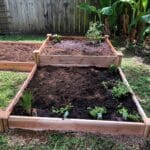
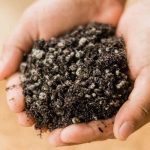
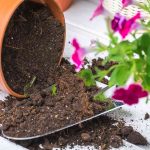
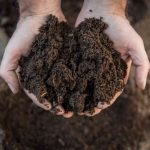
sunil
Hi, I like your post really I have read first-time Thanks for sharing keep up the good work.